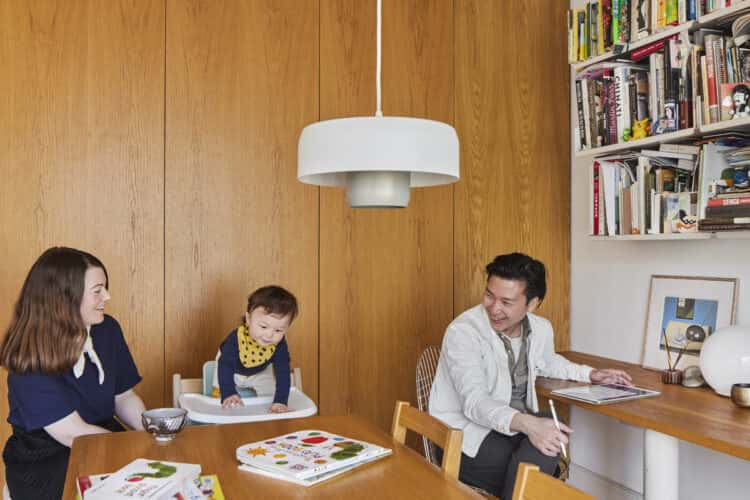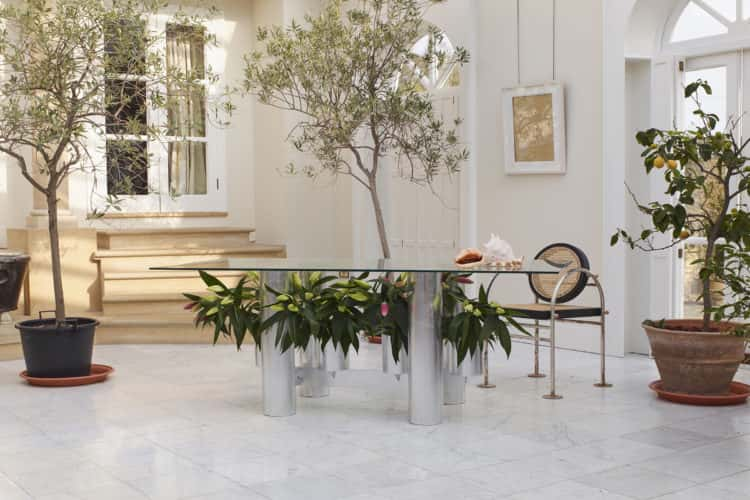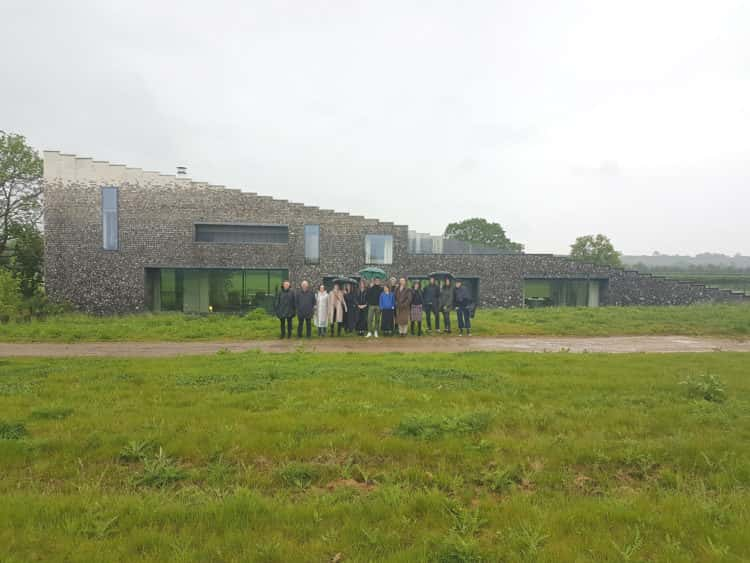Book Preview: a springtime lunch at Home Farm, John Pawson’s minimalist country house
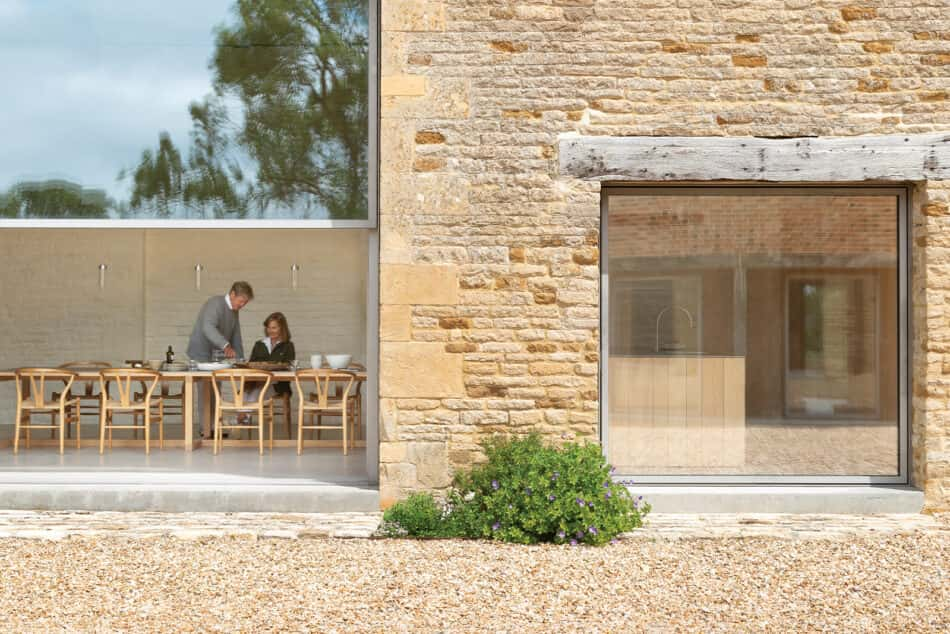
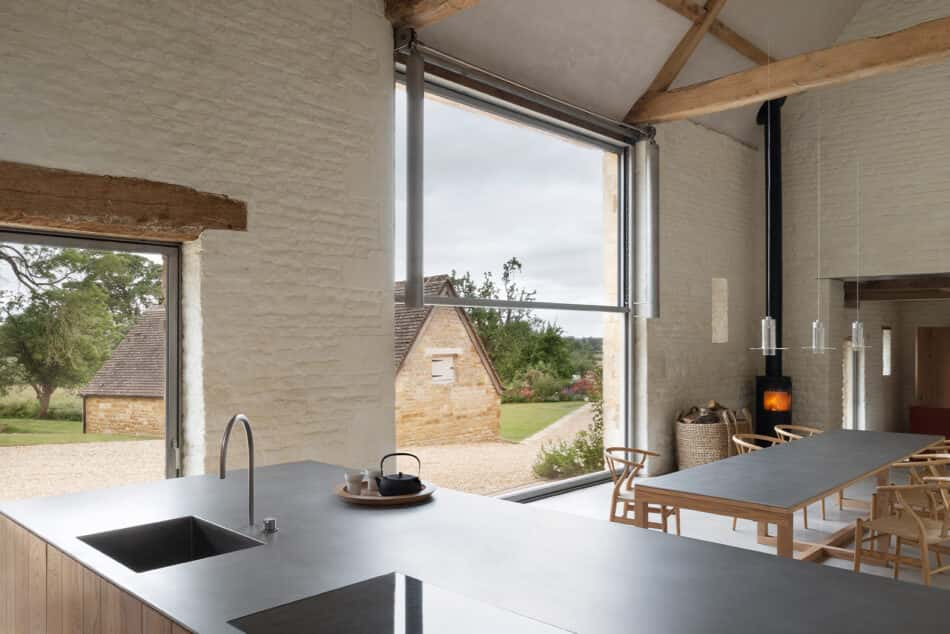
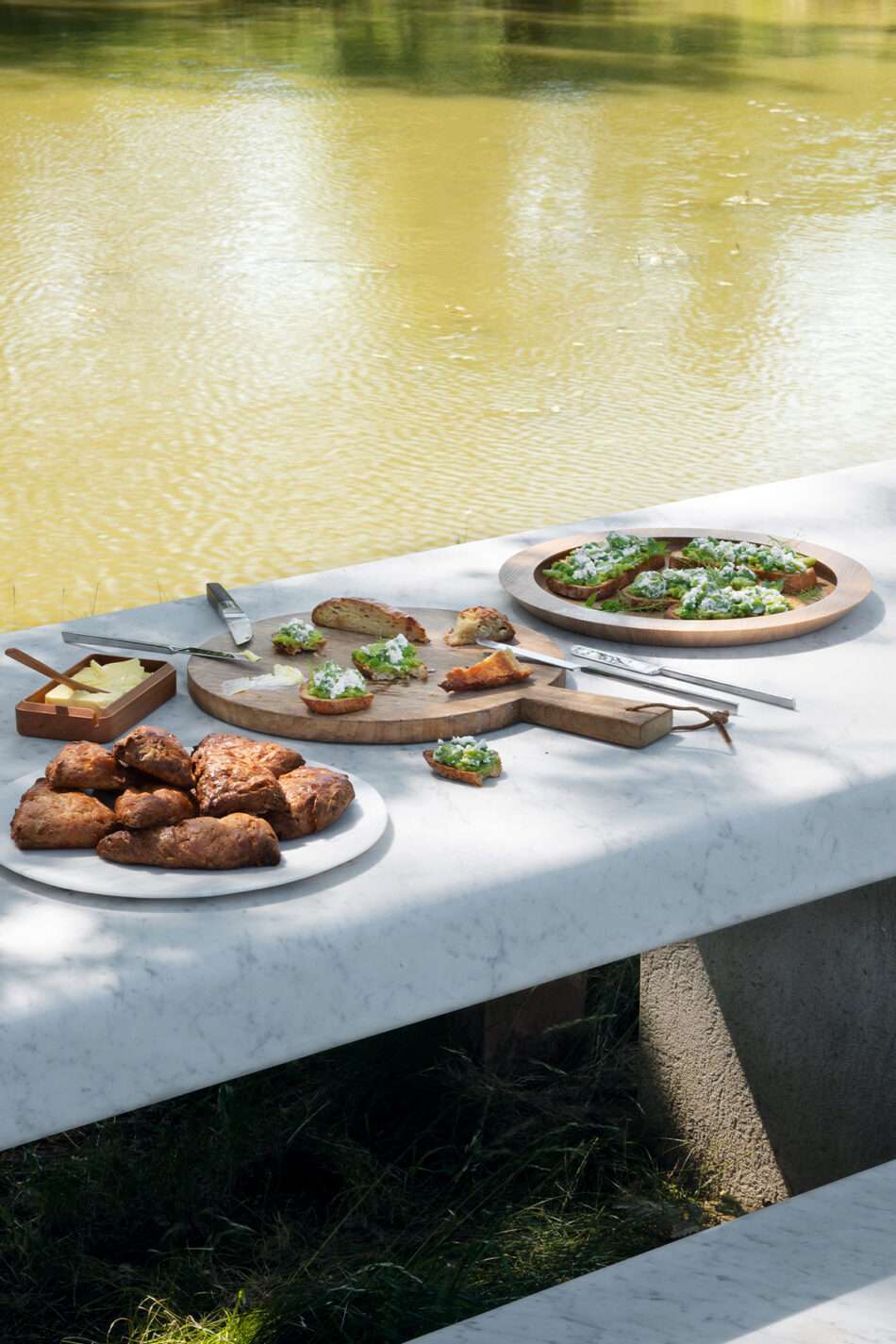
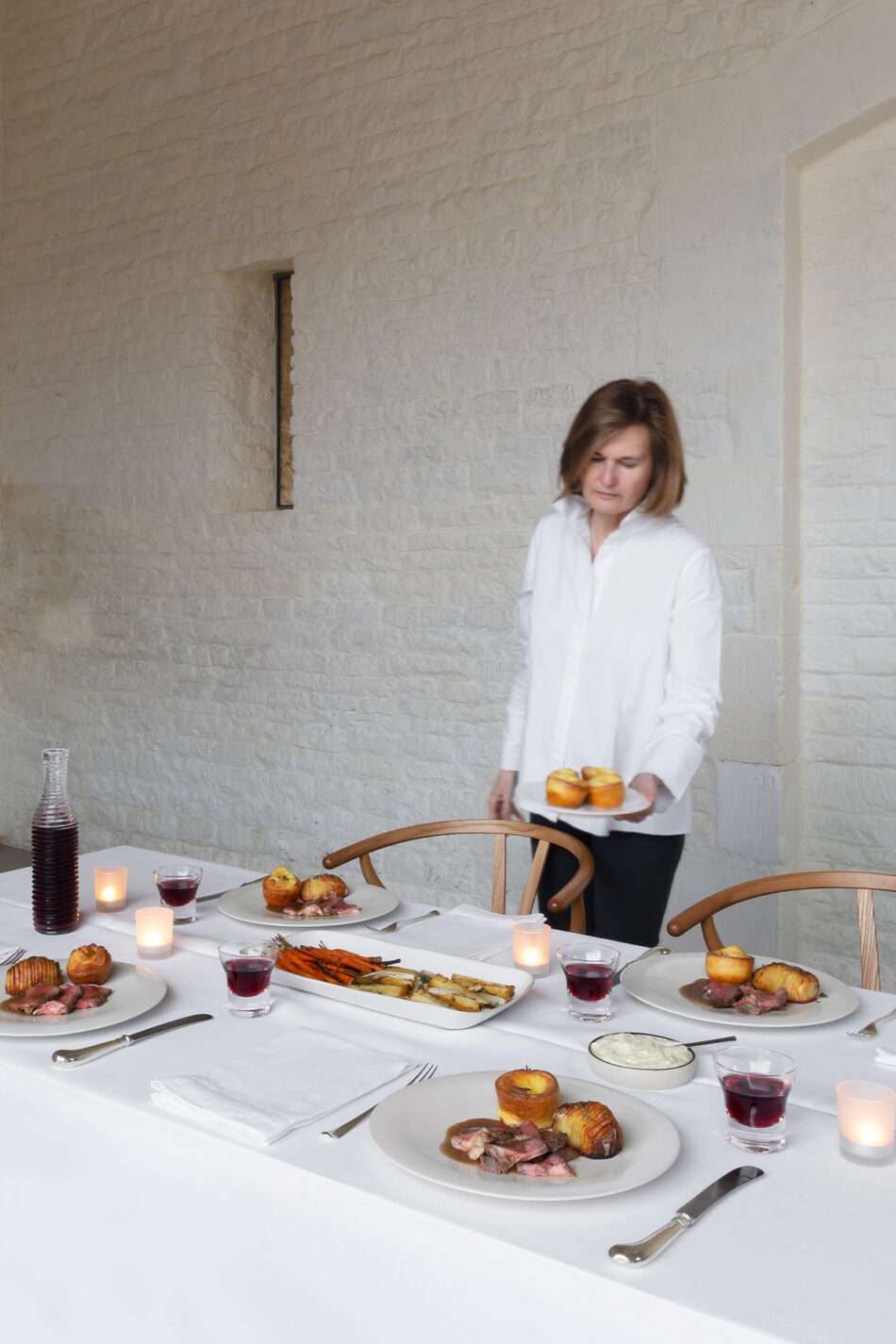
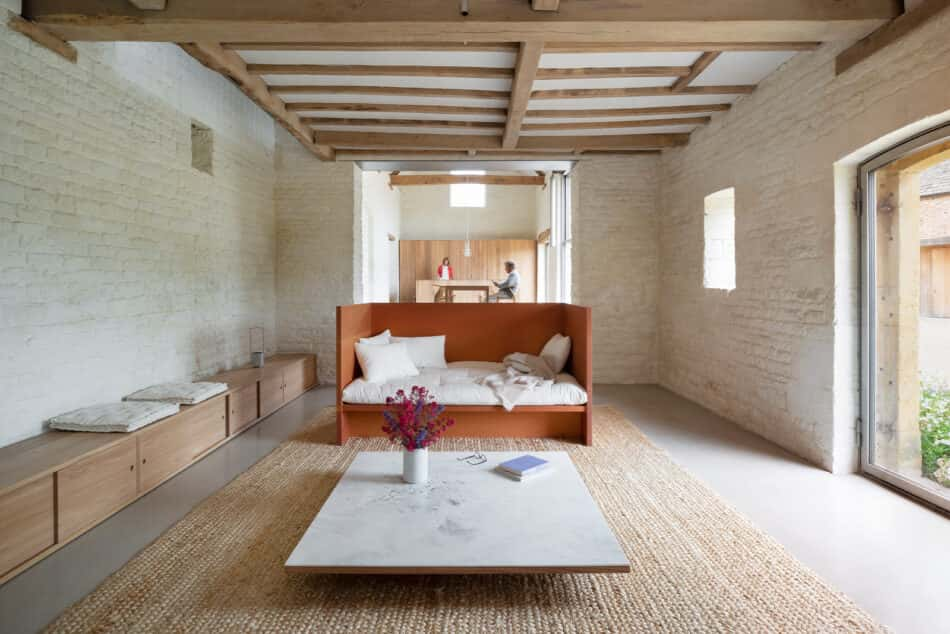
The previous cookbook from minimalist architect John Pawson’s studio, Living and Eating, is a favourite of ours here at The Modern House. Less a collection of recipes and more of a manifesto for, well… living and eating, the book’s pages are a bit of everything we love: a timeless, modern document of the life that happens within a well-designed space – in this case, Pawson’s bare-boned London home. Now, just over two decades since Living and Eating’s publication, Pawson has gone pastoral in Home Farm Cooking, a record of the seasons observed from his Oxfordshire home, as told through 100 recipes, photography and introductory essays.
“Mealtimes are very important to both of us and, like many, we have become increasingly determined to buy, cook and eat in a way that respects the connection between field and fork,” says Catherine Pawson, John’s wife and co-author in her preface to the four chapters, one for each season. Recipes take in the familiar and essential – roast chicken, baked salmon, fish pie – as well as the more adventurous – ceviche, stuffed courgette flowers, raw tuna salad. The cooking is refined but relaxed, clean but comforting, reflecting the space they created and are presented in.
That space is Home Farm, the Pawsons’ countryside residence that is the culmination of John’s decades-long pursuit of what he defines as “sensual space” in which “the primary experience is of the quality of light, materials and proportions.” The collection of farm buildings that comprise the property have been stripped back to allow these qualities to take centre stage, while additions in the form of furniture, kitchens and not a whole lot else (this is the home of “the king of minimalism”, after all) were designed by Pawson to seamlessly integrate with the fabric of the architecture.
But woven into this fabric is also the lives of the people who occupy it, and Home Farm Cooking, like its predecessor, presents this in sumptuous detail. A summer pudding is drizzled with the deep purple of berry juice, its ultra-minimal backdrop making the spectacle even more sensual; an autumn recipe for crevette is served in sight of a roaring fire and the Pawsons are captured enjoying a picnic under the shade of a tree, foregrounded by a panoply of gooseberry fool, seasonal fruit and shortbread – the ultimate source of inspiration for any outdoor eating you’re planning in the months ahead. And for inspiration on what to serve, here are two recipes for a springtime lunch, extracted from the book.
Ham, cheese and leek scones
Catherine: “This is a recipe from Claire Ptak’s The Violet Bakery Cookbook. It’s the cookbook I rely on most often for baking, as her recipes are precise and simple. When leeks are cooked slowly, their flavour becomes sweet and nuanced. Spread a little butter over the scones straight out of the oven and you are in for a treat. You can also freeze the prepared scone dough and bake them when you need them. They will keep for a month in the freezer.”
Preparation time: 30 minutes, plus one hour 10 minutes soaking and chilling time
Cooking time: 45 minutes
Makes: 12 scones
2 leeks
25g unsalted butter
2 tbs olive oil
1 tsp flaky sea salt
A good grind of black pepper
200g Parmesan cheese, finely grated
450g plain flour, plus extra for dusting
2 tbs baking powder
100g cold unsalted butter, cut into cubes
500g plain yoghurt
200g your favourite ham (Parma, Serrano, Bayonne or Yorkshire), cut into bite-size pieces
1 tsp fine sea salt
1 egg, lightly beaten with a little milk or water, for the egg wash
Trim the roots and the tough green stalks and outer layer from the leeks. Cut the leeks in half lengthwise and run under cool water to rinse, peeling back the layers to get inside where the grit is lodged. Slice the leeks crosswise into 4mm thick slices and drop into a bowl of cold water for about 10 minutes. All the dirt will fall to the bottom. Scoop the leeks out (rather than pouring them out with the water) and place in a colander to drain. Pat dry.
In a heavy frying pan over a medium heat, heat the 25g butter and the oil until the butter starts to foam. Add the leeks, the flaky sea salt and the black pepper and sauté for 10–15 minutes until soft but without colour. When they are cooked, tip them in a bowl and chill in the refrigerator for about 20 minutes (this can be done the day before).
Line a baking pan or another container that can fit in your refrigerator with baking paper.
In a medium bowl, weigh out the Parmesan, flour and baking powder and stir to combine. Add the cold butter and cut it into the dry mixture with a pastry cutter or the back of a fork (or use a food processor) until crumbly. Add the yoghurt, ham, fine sea salt and cooled leeks. Mix quickly to combine, then pat into a cube and place on a lightly floured surface. Pat the dough into a thick log and cut out triangles from the log — you will have about 12. Place the dough triangles on the lined baking pan or other container and put in the refrigerator to chill until set, about one hour.
Preheat the oven to 180°C/350°F/Gas Mark 4. Line a large baking pan with baking paper, place the chilled scones on it and brush them with the egg wash.
Bake in the oven for 25–30 minutes until golden on top, then serve straight away.
Broad bean crostini
1 tbs extra virgin olive oil, plus extra for drizzling
1 ciabatta, sliced diagonally 1cm thick
1 clove garlic, halved
100g shelled broad (fava) beans
100g shelled peas
Handful mint leaves
Lemon juice, to taste
100g soft ewe’s cheese or feta cheese, crumbled
Sea salt and black pepper
Pea shoots, to serve
Catherine: “These vibrantly coloured, bite-size toasts make the perfect accompaniment to summer drinks. They are to be eaten with your fingers. I also serve these as a starter or as a light lunch.”
Preheat the oven to 160°C/325°F/Gas Mark 3.
Drizzle olive oil over the ciabatta slices and cook on a baking sheet in the oven for about seven minutes until the bread is dry and crispy. Remove from the oven and rub the garlic over the toasted bread while it is still warm.
Bring a saucepan of salted water to the boil. Add the broad (fava) beans and peas and cook for about two minutes until they are just soft. Transfer them to a bowl of iced water to stop the cooking and retain the colour, then drain them. Remove the grey outer shell of the broad beans until you have just the bright green bean.
Put most of the mint leaves into a small bowl, together with half of the broad beans and peas and blend with a stick blender until they form a rough paste. Add about a tablespoon of olive oil to loosen the paste, balancing the flavours with lemon juice and seasoning with salt and pepper. Smear the paste over the crostini. Spoon on some whole broad beans and peas, along with some crumbled cheese and tear and add the rest of the mint leaves. Season again, place on a wooden board and scatter over some pea shoots to decorate.
Extracted from Home Farm Cooking by Catherine and John Pawson, published by Phaidon. Photography by Gilbert McCarragher
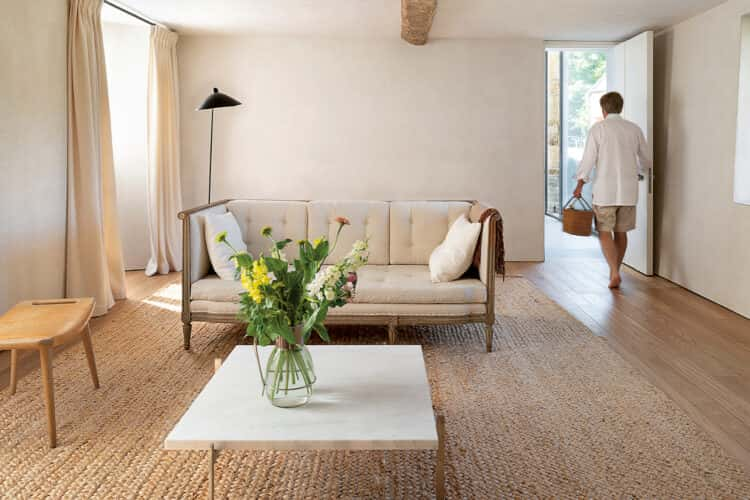
RELATED ON THE MODERN HOUSE

A Modern Way to Live: our co-founder Matt Gibberd on light

House Style with Charlotte Taylor
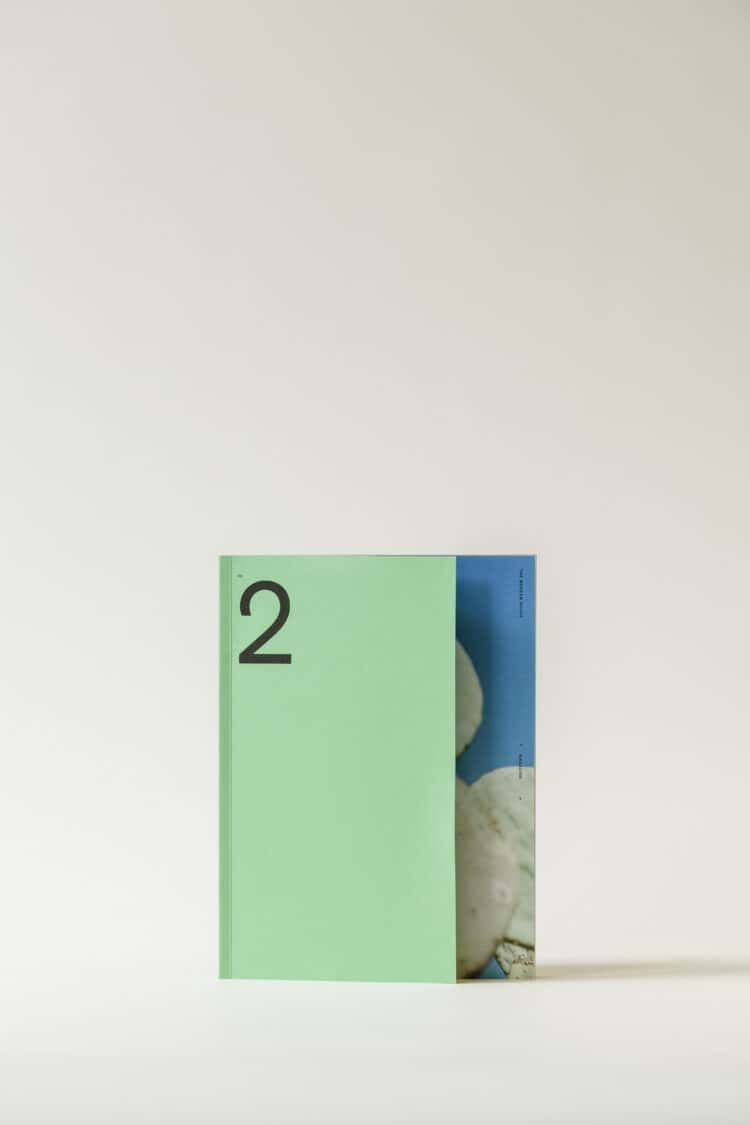
Issue No.2 of The Modern House Magazine is here
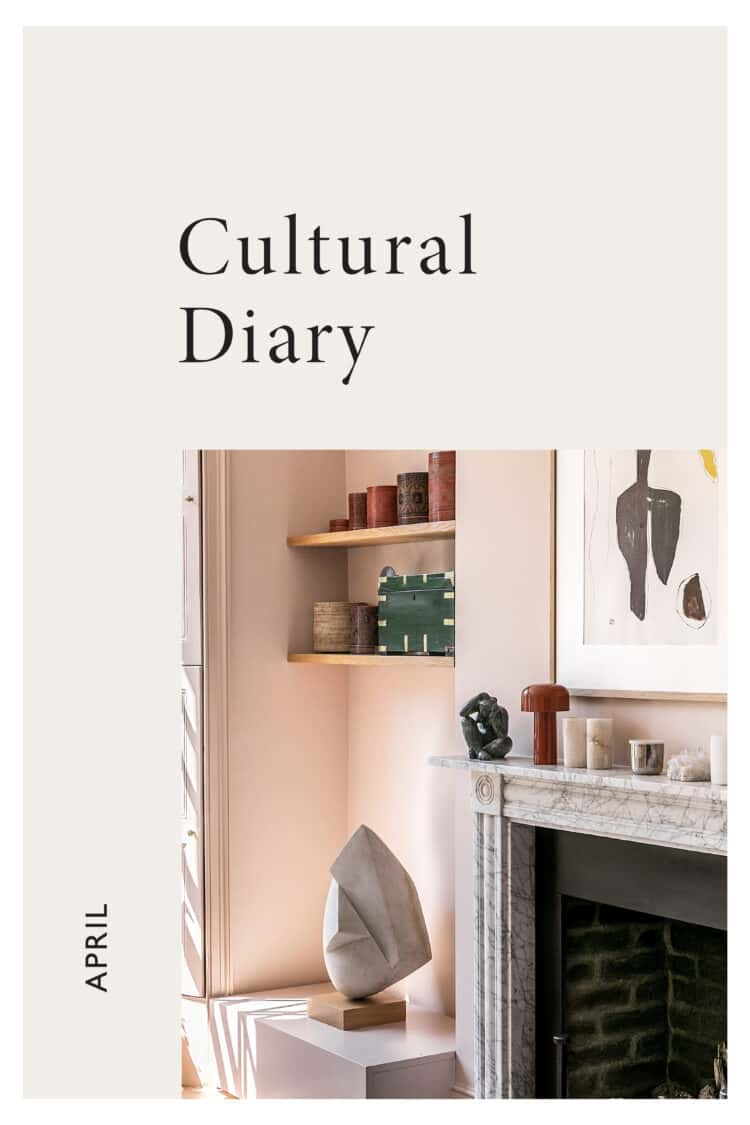
Galleries and outdoor cultural spaces reopening this April
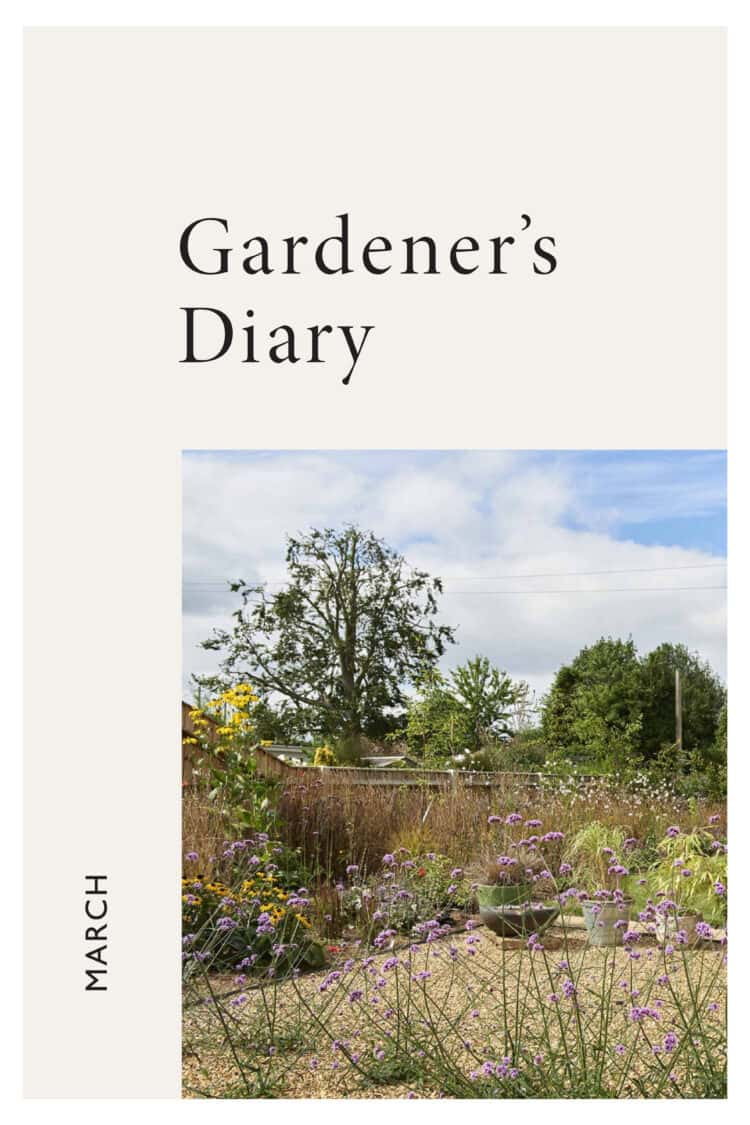
Gardener’s Diary: what seeds to sow in spring

New C20 Society book and lecture celebrate Alison and Peter Smithson
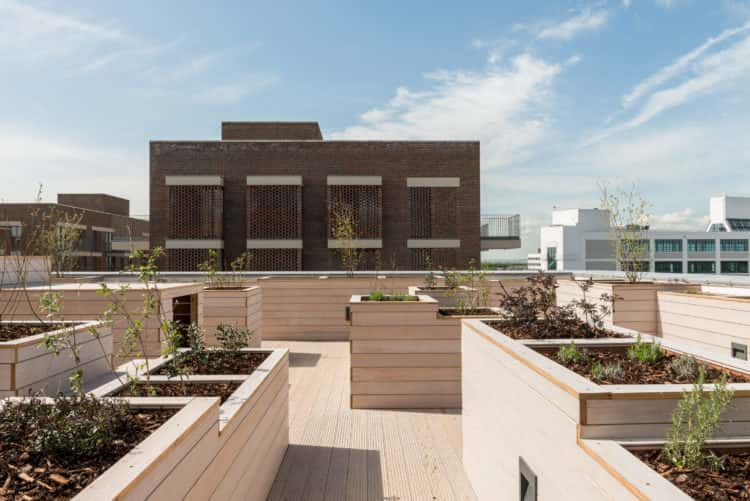
Architect Christophe Egret on what it means to build well-designed new homes

